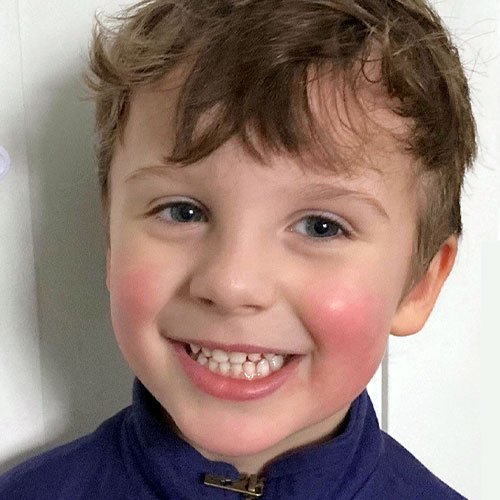My name is Mary Valderrama and I am a parent of a four-and-a-half-year-old with autism. I’m also an autism support teacher and a Board Certified Behavior Analyst (BCBA). As a result of wearing multiple hats, I have a slightly different perspective than most.
My journey with AAC, specifically LAMP Words for Life®, began about five years ago when a student arrived in my autism support classroom with a speech-generating device. It was relatively new to her and a brand-new experience for me. I found myself leaning heavily on our speech-language pathologist and the student’s personal care assistant (PCA) to help me navigate her AAC device. My student was not using the device very often, so we created opportunities to utilize it throughout the day to include requesting items and participating in morning meetings. We learned together where to locate the buttons for colors, shapes, money, and more. She and I became proficient at navigating her device so that she could not only participate in classroom activities, but also have her wants and needs met.
My classroom began implementing the verbal behavior (VB) approach and we were encouraged to move away from AAC and toward the use of sign language. One of the main reasons this was recommended was because my student would always have her fingers present and be able to use them to communicate. I think it was overlooked that most individuals (at least in her world) would not be able to understand what she was communicating if using sign language. Her family appreciated that just about everyone would be able to understand what she was communicating when using her device.
Around this time, I became very passionate that the individual and family should be the ones determining the best way for them to communicate. If more individuals had an effective way to communicate, we would see a decrease in frustration and behavioral concerns, as they often go together. Over the years, I have really become passionate about advocating for families and their student’s needs.
About two years ago, my son Finnegan (“Finn”) was diagnosed with autism, ADHD, and a speech and language disorder. From a young age, he has always struggled to be understood and as a result, we were beginning to see behaviors. I cannot fathom how frustrating it must be to know what you want to say, but not effectively be able to communicate it to others. After my experiences with my former student, I decided to purchase an iPad® for Finn and download the LAMP Words for Life app onto it. I did this independently of his IEP team, as I felt like this would be the best step moving forward for Finnegan. To give him a way to effectively communicate. Giving him the gift of language was one of the best decisions that I have made for my child. I believe LAMP Words for Life is the reason his language has had a sudden boom over the last six months.
One activity that Finn really likes to do with my husband and me is to “read” a story using his “talker”. We have found a lot of great books that I have printed off the internet and several that have been provided to us by his current speech-language pathologist that use the images on his iPad to tell the story. This allows him to “read” to me and become good at navigating the AAC vocabulary in the process. It is a super fun way to learn new words that clearly makes Finn feel very proud. Now most evenings he reads to me before I read to him.
Finnegan definitely prefers to use words over his “talker”. His language has improved tremendously, and I attribute a lot of that directly to deciding to download the app LAMP Words for Life two years ago. While he prefers using his words, I like his iPad to always be accessible if he wants and/or needs it. I don’t believe Finn will need AAC for the rest of his life, however until the day that he finds his words; I want them readily available at the tip of his finger.

